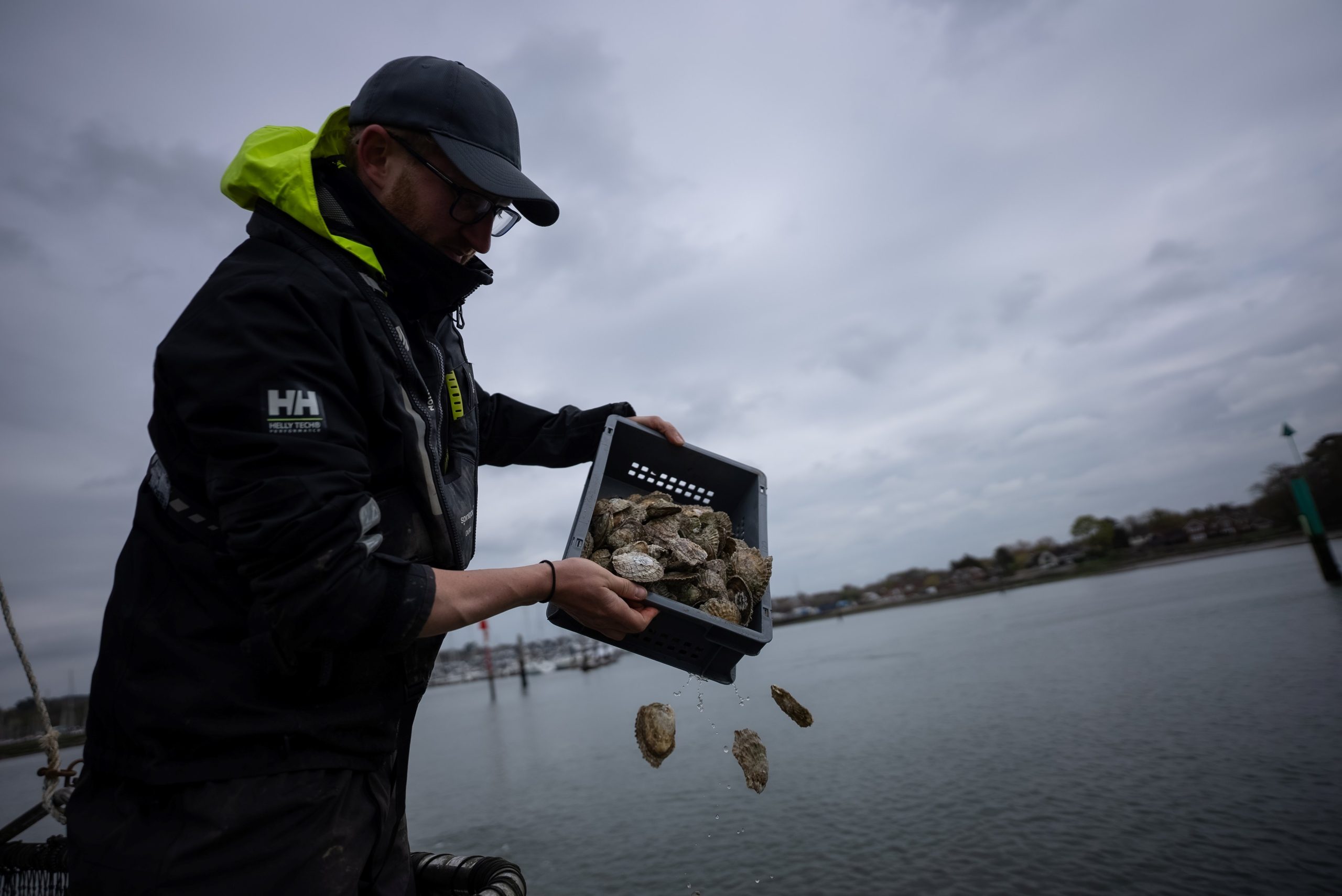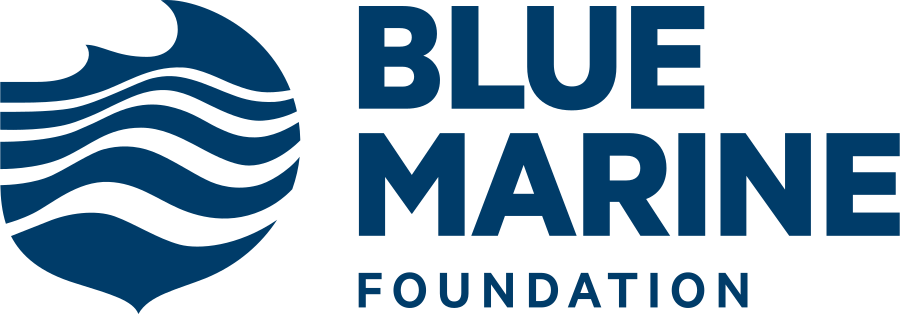OYSTER
OPPORTUNITIES
Blue Marine Foundation is restoring millions of oysters across the Solent. Find out how you can get involved below!

Globally, an estimated 85 per cent of oyster beds and oyster reef habitats have been lost, making them among the most imperilled marine habitats in the world. Blue Marine is creating a model for restoration of this key habitat by relaying millions of oysters into the Solent.
To increase the number of breeding oysters within the Solent, we have placed mature “brood stock” oysters at high densities in cages hung in the water beneath pontoons, facilitating the release of millions of larvae into the Solent. The cages have been shown to provide a refuge for other marine life, with 97 different species having been found living within the cages so far, including critically endangered European eels, juvenile spiny seahorse and sea bass.
To promote natural recruitment and re-establish wild oyster beds, Blue Marine’s Solent team is also re-seeding protected seabed sites with juvenile oysters. Volunteers can get involved with reef restoration by coming along to our biosecurity days or joining in with nursery cage-cleaning efforts around the Solent. Keep an eye out below and sign up for our newsletter for upcoming opportunities!
Current opportunities:

Come and volunteer for oyster biosecurity with us! These volunteering days will be based at the Institute of Marine Sciences, University of Portsmouth, and will involve helping the team assess and prepare native oysters for reef deployment. If there are no event dates confirmed at the moment, sign up to be on our volunteering list and we’ll contact you when dates become available.
Learn more about Oyster habitats
